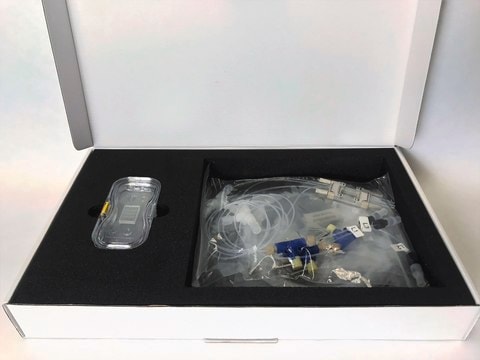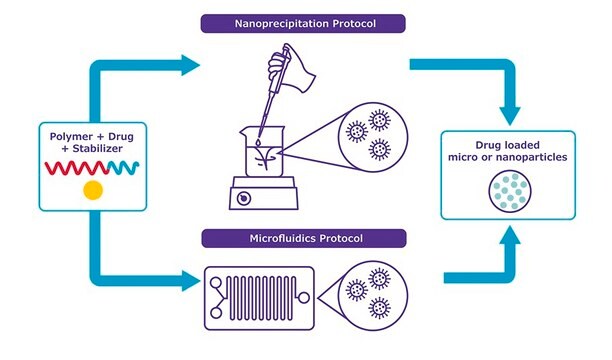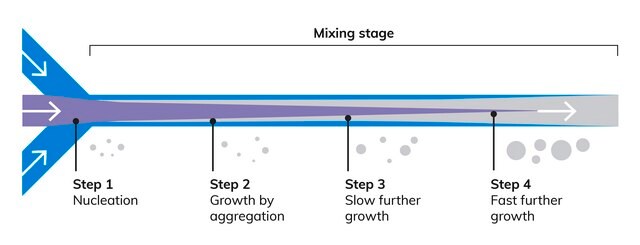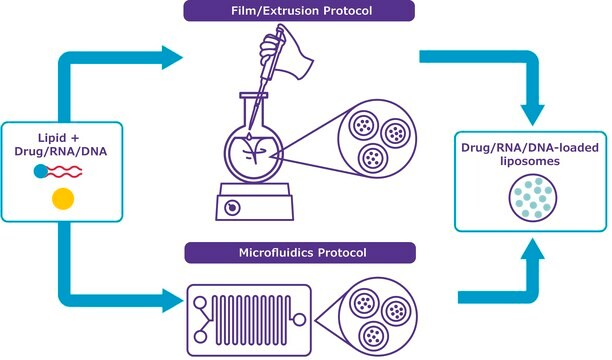915408
NanoFabTx™ PEGylated nanoparticle formulation screening kit
Synonyme(s) :
NanoFabTx™ reagent kit, Nanoparticle synthesis kit, PEGylated nanoformulations
About This Item
Produits recommandés
Description
Kit components :
PEGPLGA-50L (912808-500mg)
PEGPLGA-75L (913049-500mg)
PEGPLA-L (913308-500mg)
PEGPCL-H (912549-500mg)
Stabilizer - P (913448-10g)
Materials screening kit, for synthesis of PEGylated polymeric nanoparticles
Niveau de qualité
Application(s)
advanced drug delivery
Température de stockage
2-8°C
Description générale
Application
Caractéristiques et avantages
- Provides step-by-step protocols, both for standard extrusion or microfluidic-based synthesis, developed and tested by our formulation scientists
- Microfluidic formulation development for enhancing drug bioavailability
- Flexible synthesis tool to create uniform and reproducible nanoparticles
- Optimized to make nanoparticles from 60-100 nm
- Includes 4 different PEGylated polymers to identify the optimal material
Informations légales
Produit(s) apparenté(s)
Code de la classe de stockage
12 - Non Combustible Liquids
Faites votre choix parmi les versions les plus récentes :
Certificats d'analyse (COA)
Désolés, nous n'avons pas de COA pour ce produit disponible en ligne pour le moment.
Si vous avez besoin d'assistance, veuillez contacter Service Clients
Déjà en possession de ce produit ?
Retrouvez la documentation relative aux produits que vous avez récemment achetés dans la Bibliothèque de documents.
Notre équipe de scientifiques dispose d'une expérience dans tous les secteurs de la recherche, notamment en sciences de la vie, science des matériaux, synthèse chimique, chromatographie, analyse et dans de nombreux autres domaines..
Contacter notre Service technique




